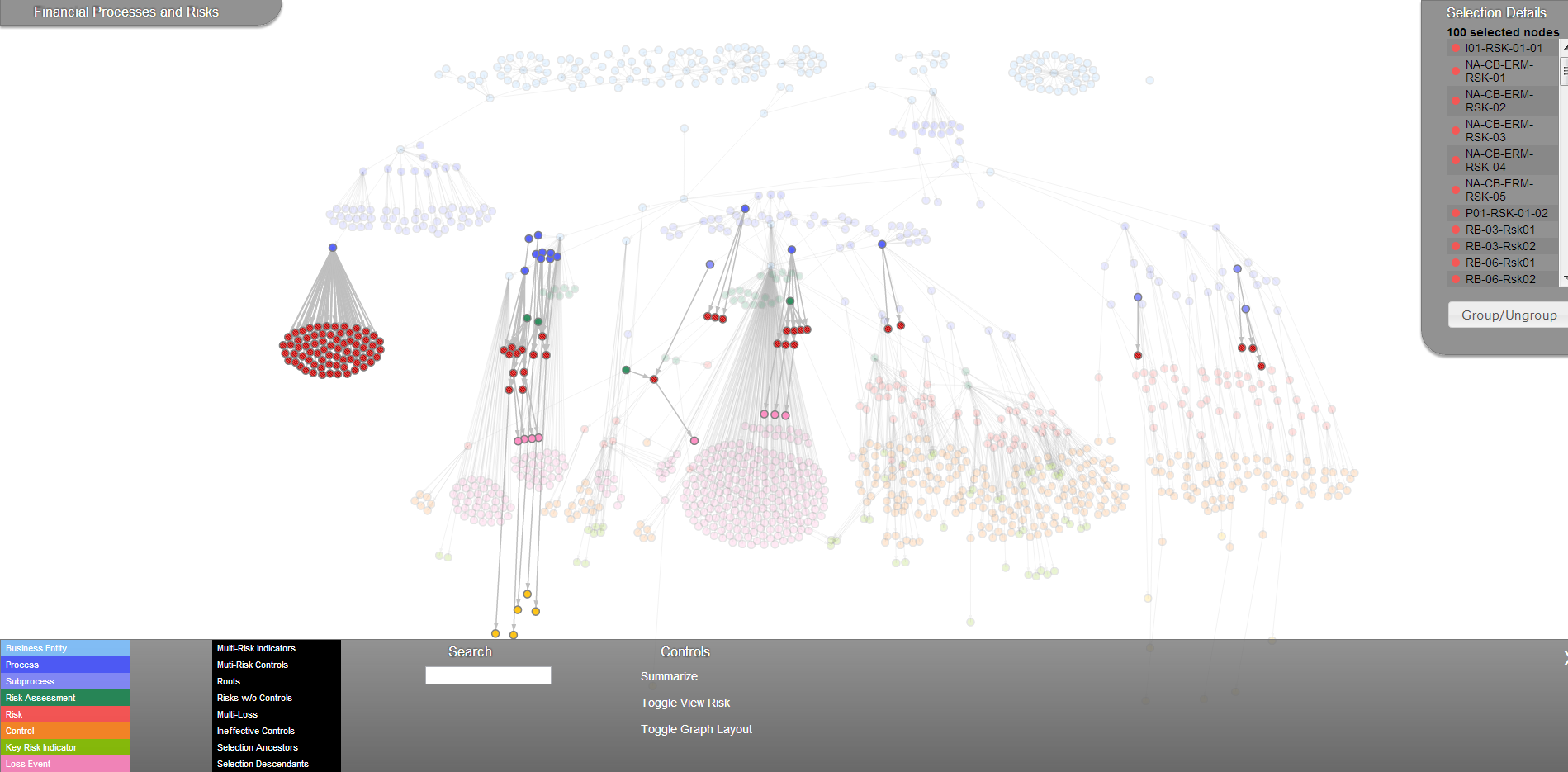

We found that commercially available indices that quantify different categories of risk can be used to inform supply chain risk management decisions. We looked at disruption risks due to natural disasters, supplier bankruptcy, and political instability. While previous studies have quantified and visualized risk in companies' supply chains, our research sought to combine different categories of risk in order to give a more comprehensive picture of the risk at each node. Once calculated, the values-at-risk were overlaid on a visual depiction of the company's supply chain network. The probabilities of loss allowed us to calculate a value-at-risk at each node. Using input from the company, we equated different risk indices with the probability of loss of a node in their supply chain. We worked with a company in the garment manufacturing industry to map their supply chain for a few representative products. In order to focus risk management resources on locations in the supply chain with the most risk, companies need a comprehensive method to quantify all of their significant supply chain risks. Companies cannot hope to mitigate all of their supply chain risks.

Disruptions due to these risks can be costly. "Data need to be translated into actionable information.Supply chains are exposed to a variety of risks as they become more complex and geographically diverse. "Data availability alone is not enough," Holdren said. The emphasis now is on finding more targeted ways to adjust public policy, business plans and daily life for a lower-emission and more adaptable society. Climate Resilience Toolkit were launched to better inform and train public officials. In 2014, both the more localized National Climate Assessment and U.S. PREP also isn't the federal government's first stab at weighing in on the risks posed by climate change.Īlready upwards of 680 data sets related to climate are on the federal site. In addition to drafting plans for transitioning the nation's energy infrastructure to renewable sources such as solar and wind, cities are increasingly looking to tools such as green infrastructure and more sustainable land development to help gird for a more uncertain future. The effort also comes as cities around the world invest, with the help of non-government funding from groups such as Rockefeller Foundation offshoot 100 Resilient Cities, in hiring chief resilience officers and publishing climate resilience plans.Ĭomplicating those efforts is that climate challenges such as pollution and property vulnerable to extreme weather often stand to disproportionately harm low-income and minority communities, making resilience as much a social issue as it is an economic and environmental one. With PREP, the idea is to centralize that data and get it into the hands of city planners, businesses and citizens seeking informed ways to bolster themselves against volatility promised by climate change. "We have a lot of data about climate risk," DuBay said. While the conversation surrounding climate change has in years past focused on simply understanding the science behind rising average global temperatures, the emphasis with climate adaptation and resilience is acting on what we already know. "Communities across the globe are going to continue to confront, among other things, rising sea levels, increasing risks from more intense storms, more frequent and severe heat waves, more frequent wildfires." From risk to response "Even with aggressive reductions in carbon pollution, the climate is going to continue to change for some time," said John Holdren, director of the White House Office of Science and Technology Policy. The efforts are the latest of several in recent years aimed at better localizing and contextualizing data on environmental phenomena such as droughts, heat waves and food production that stand to be affected by climate change. The launch of PREP also coincided with the announcement of a joint statement of 13 countries committing to better share data on climate resilience, informing the much broader challenge of climate change mitigation and adaptation - a topic that has proved to be a perennial bellwether in global climate negotiations, often dividing rich and poor countries over who should be paying for the data reporting measures. The project was announced at a joint White House Office of Science and Technology Policy, World Resources Institute and State Department event late last week in Washington.Ī range of government agencies and corporations - NASA, Microsoft, NOAA, Amazon, Google - were among the initial partners that developed the beta version of the PREP site, designed by data visualization company Vizzuality, currently being tested.


 0 kommentar(er)
0 kommentar(er)
